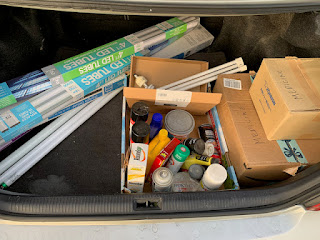Through the mid-1960's I followed baseball as closely as I could with my Sony transistor radio and by poring over the sports sections of the two local papers. (The remote Hawaiian Islands did not have "live" TV with the Mainland until 1966, and, of course there was no ESPN.)
Beginning with Roger Maris' chase for Babe Ruth's single-season home-run record in 1961, I went through a five-year period of reading everything I could about the Giants, Dodgers, and Yankees and studied the bios of Maury Wills, Willie Mays, Sandy Koufax, Don Drysdale, Whitey Ford, Roger Maris, Mickey Mantle, Willie McCovey, Yogi Berra, and Juan Marichal.
 |
1974: Commissioner Bowie Kuhn presents trophy
to Hank Aaron for the home-run record (Chron) |
I knew less about great players on other teams, men like future Hall-of-Famers Roberto Clemente, Ernie Banks, and Henry Aaron, who died earlier today.
Hank Aaron was one of those rare athletes whose accomplishments have grown more impressive with the passage of time. In his play or public persona he wasn't flashy but put up steady All-Star numbers--he was on 21 All-Star teams in his 23-year Major League career. He never hit more than 50 home runs in a season yet became the all-time leader with 755 lifetime home runs, 760 if one counts the 5 he struck in the Negro Leagues.
Today there are heated debates about systematic and institutional racism, but for baseball players half a century ago, like Hank Aaron and Jackie Robinson, the racism was intensely
personal. During his chase for Babe Ruth's record, Hank Aaron received 3,000 hate-mail letters a day. Today players are figuratively knocked off stride by negative tweets, back then they received hundreds of death threats from areas of the country where police protection couldn't be counted on.
It's often said that there are no heroes any more because the Internet reveals everything about everyone, warts and all. The life of Hank Aaron puts paid to that claim. R.I.P.


































